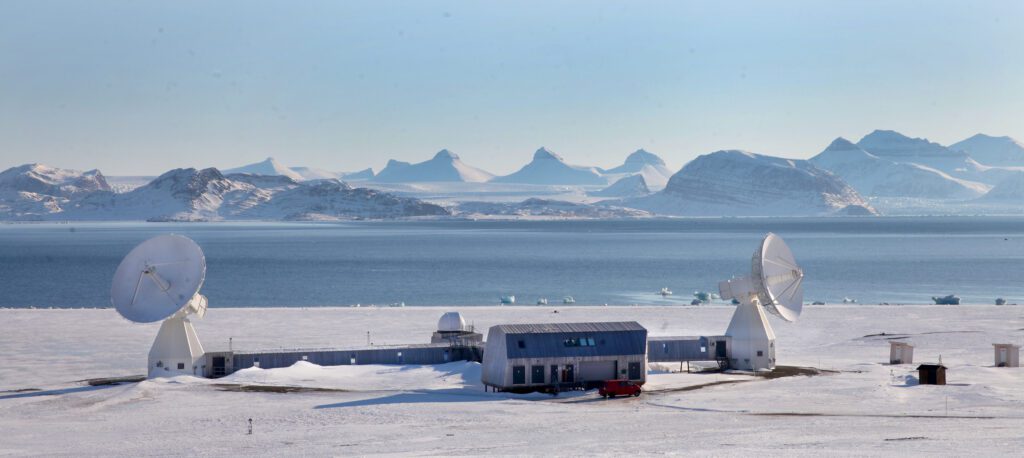Photo: Helge T. Markussen
Restrictions on the use of radio transmitters
In Ny-Ålesund Research Station there are restrictions on the use of radio frequencies (RF) in the frequency range 2-32 GHz in the geographical area within a 20 km radius from Ny-Ålesund. This involves (among others) the use of Wi-Fi and Bluetooth from both personal and scientific equipment. This frequency range is protected by law due to scientific activity.
While the general rule is that the use of equipment that emits radio frequencies (such as Wi-Fi and Bluetooth) should be avoided, such equipment can be used for safety, operational and scientific reasons. In practise this means that you have to apply for a licence from the Norwegian Communications Authority (Nkom) and coordinate your activity with NMA and the rest of the Ny-Ålesund science community.
If you are planning activity with for example drones, ROVs, UAVs or the use of other scientific equipement please read these guidlines on how to proceed:
Procedures for the use of radio frequencies
More bacground information about the radio silence in Ny-Ålesund
The Norwegian Mapping Authority’s Geodetic Earth Observatory in Ny-Ålesund

The observatory ranks as the northernmost facility of its kind.
Photo: NMA
The observatory is among a handful of the world’s first core sites within the Global Geodetic Observing System (GGOS), co-locating the four space geodetic techniques: Very Long Baseline Interferometry (VLBI), Satellite Laser Ranging (SLR), Global Navigation Satellite System (GNSS) and Doppler Orbitography and Radiopositioning Integrated by Satellite (DORIS).
The observatory is a fundamental part of a network of stations which define the global geodetic reference frame, and will be crucial to realise GGOS’s ambitious goals of 1 mm accuracy and 0.1 mm/yr stability.
Read more about the observatory here.
Did you find what you were looking for?